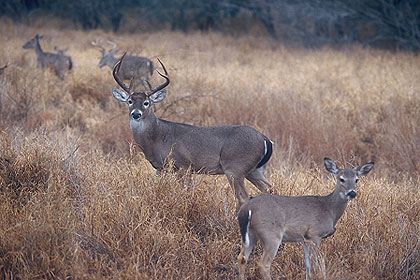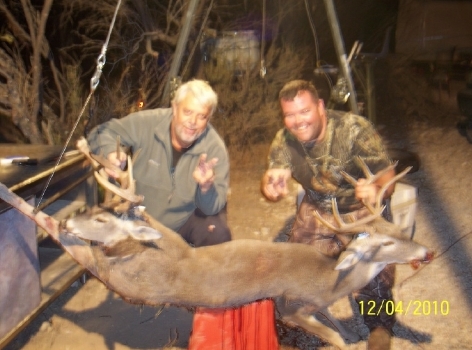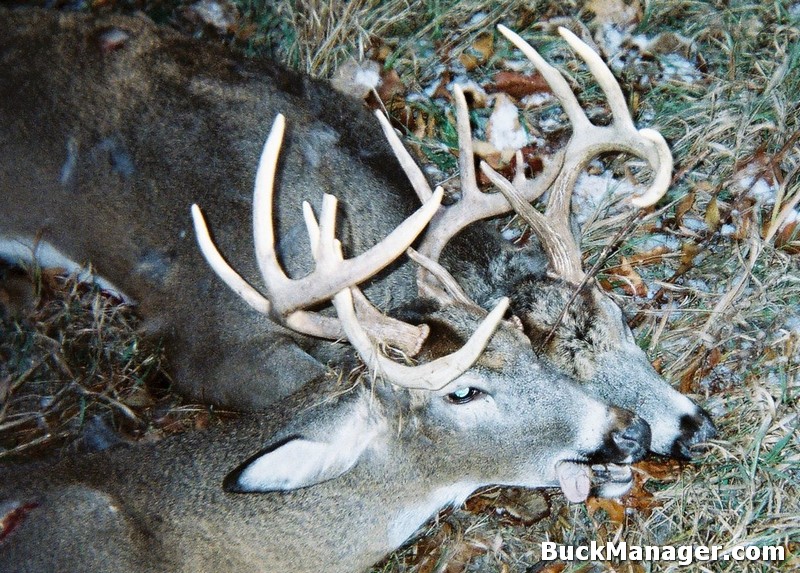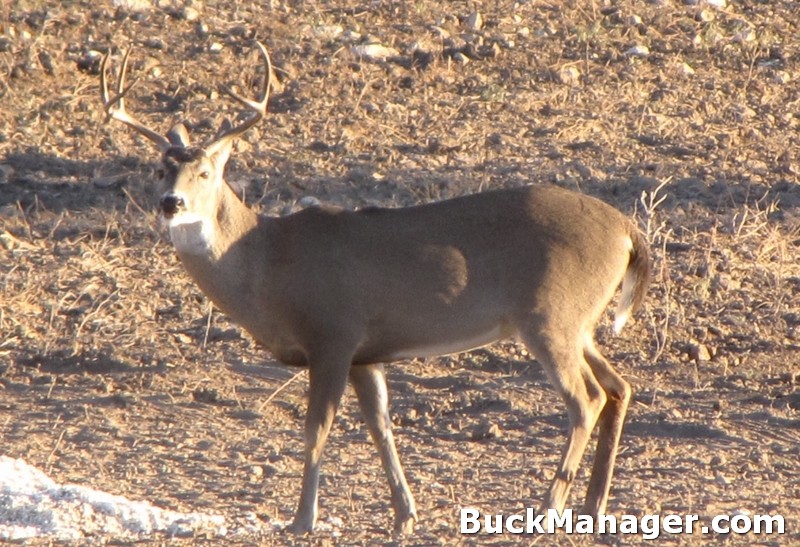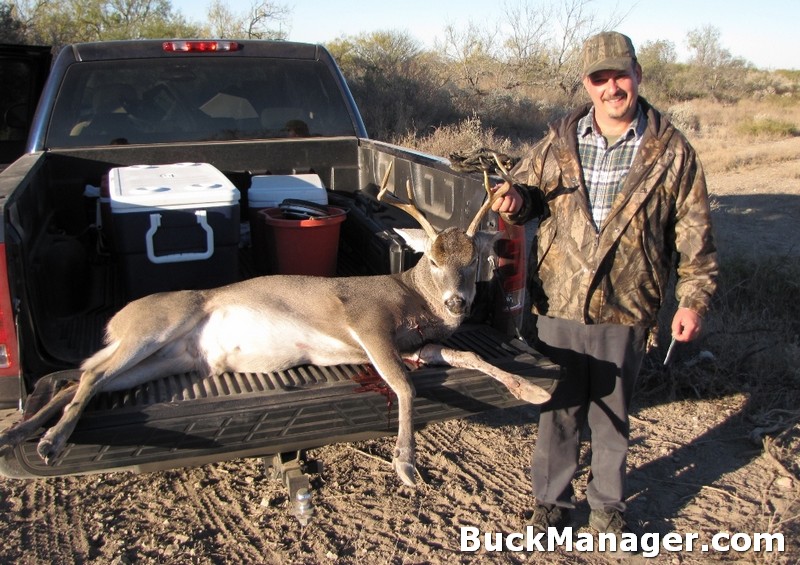The new year is well underway and spring is just around the corner. That is a good thing because habitat conditions are as tough as I’ve seen them in some time and bitter cold weather really works on a white-tailed deer’s body condition. But a new year means resolutions to do new things—even when it comes to deer management. Though the supplementation of a deer’s diet is far from a new idea, I am confident that many landowners and managers will begin offering supplemental feed during late winter, spring and summer for the first time ever.
Most of that feed will be in the form of protein pellets. Regular readers of this site know that food supplementation is just a small part of an overall deer management program, but it can be an important component for maintaining and increasing the overall condition of the deer herd found on a property. This is especially true during the food stress periods that occur each year, summer and winter. Right now is as good of time as any to start, but I recommend following the simple suggestions below when beginning a supplemental feeding program for white-tailed deer.
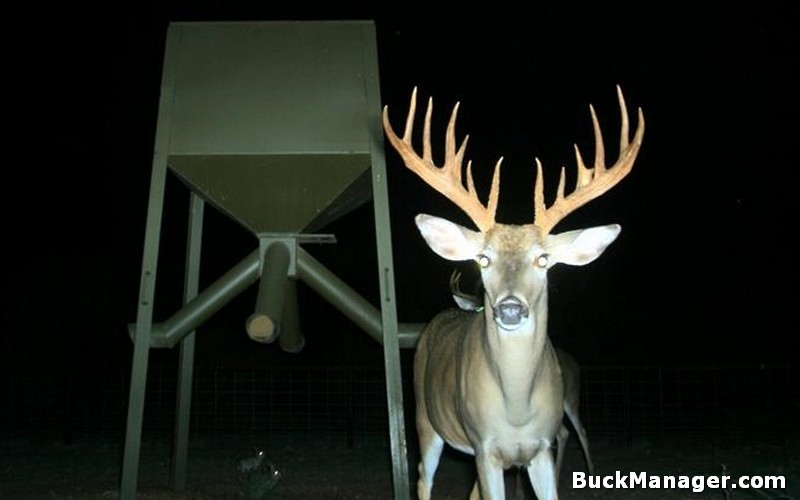
Supplemental feeding itself is not rocket science, but there are some things you can do to increase its effectiveness. First and foremost, do not use supplemental feed as a tool to maintain substantially more deer on a property than the habitat can support. Habitat management and population management are much more important than pouring feed into a system.
If a deer manager can combine good habitat and the appropriate number of deer with a supplemental feeding program kicker, then the result will be far superior to just placing out feed and expecting quality deer to simply show up.
It also needs to be said that protein pellets should not be put into timed, spin-feeders. The unfortunate hunters out there that have tried this delivery method will attest to this advice. For one thing, dispensing “supplemental” foods from timed feeders is not really supplemental. It’s bait. And deer can not consume enough in this manner for it to truly supplement their diet.
Protein pellets contain much more moisture than corn or roasted soybeans and will sweat inside a feeder once temperatures begin to rise. It does not take much heat to make the temperature rise rapidly within a confined area. Because pellets move through timed feeders very slowly, this release of moisture will cause the feed to mold and cake-up. Use free-choice feeders.
Do not be disappointed if deer ignore your tasty offerings. Whitetail know a lot about their natural environment, but deer do not have an understanding of manufactured feeds or any new-to-them feed for that matter. Although deer are quick studies, don’t expect them to hammer your protein feeder right off the bat. There is a learning curve involved.
I’ve been contacted my numerous managers and hunters over the years that have filled new protein feeders with tons of high-protein pellets only to be disappointed when they return to their property and not a deer has touched it. In many cases, the problem is simply about timing.
Properties that have offered free-choice feeds for years know that deer consume supplemental foods in varying amounts during different times of the year. This phenomenon is especially evident during the spring and fall, when forbs and mast are abundant and readily available. This happens even on properties where deer have been supplemented for long periods of time. When available, whitetail deer prefer high quality natural foods over any supplemental food we can offer. This is why good white-tailed deer habitat is so important.
To get to the point, do not expect a lot of activity around your feeder when habitat conditions are good, such as after spring green-up or when acorns fall or during those rare years when rains continue throughout the summer. And although habitat conditions come into play, the time of year is not the only factor that can impact deer use of supplemental foods. It also depends on deer density and feeder density.
Lastly, when new foods are introduced onto a property deer must be conditioned to consume these new foods. Managers can either introduce the new food and just wait them out, or the new food can be mixed with foods that are familiar to deer. For example, if deer on a ranch commonly eat corn, then mix corn with the new feed to introduce it to them. Then, decrease the amount of corn and up the percentage of the new food. This is by far the best way to transition white-tailed deer to consume new foods.
Again, getting deer to eat new foods is not terribly difficult, but there are some factors that can effect how fast they hit new food sources. Habitat conditions, food availability, deer density, season and other deer management practices can all impact the consumption of supplemental foods. Simply keep all of these variables in mind if you plan on introducing new foods to whitetail and prepare to be surprised. Because once deer begin using their new food source you may be looking for supplemental income to help pay for it all!
